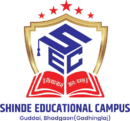Training & Placement Cell
Training and Placement Activity Plan
1. Pre-Placement Training Programs
a. Soft Skills Training:
Communication Skills: Workshops on verbal and non-verbal communication.
Presentation Skills: Training on effective presentation techniques.
Group Discussions (GD): Regular GD sessions to enhance articulation and critical thinking.
Interview Skills: Mock interviews with feedback sessions.
Resume Writing: Guidance on creating impactful resumes and cover letters.
b. Technical Skills Training:
Domain-Specific Workshops: Training sessions on core engineering subjects relevant to various branches.
Coding and Algorithm Classes: Special coding bootcamps and hackathons.
Project-Based Learning: Encouraging students to undertake and complete mini-projects.
Certifications: Facilitate courses for certifications like Cisco’s CCNA, Microsoft’s Azure, AWS, etc.
c. Aptitude and Logical Reasoning:
Regular aptitude tests and reasoning practice sessions.
Training modules for quantitative aptitude, logical reasoning, and data interpretation.
2. Industry-Academia Interaction
a. Guest Lectures:
Invite industry experts for guest lectures on current trends and technologies.
Alumni talks to provide insights into industry expectations and experiences.
b. Industrial Visits:
Organize visits to various industries to give students a real-world perspective.
Virtual tours and webinars from industry leaders.
c. Internships:
Collaborate with companies to offer summer and winter internships.
Encourage students to undertake research internships at renowned institutes.
3. Placement Activities
a. Campus Recruitment:
Organize campus recruitment drives by inviting various companies.
Coordinate with top recruiters in different engineering domains.
b. Off-Campus Recruitment:
Guide students on how to apply for off-campus placements.
Provide information about job fairs and walk-in interviews.
c. Online Job Portals:
Assist students in registering on job portals like LinkedIn, Indeed, and Naukri.
Conduct workshops on effective usage of these portals.
4. Entrepreneurship Development
a. Entrepreneurship Cell:
Establish an E-cell to foster entrepreneurial spirit.
Conduct workshops and seminars on startup creation, funding, and business management.
b. Startup Incubation:
Collaborate with incubation centers to support student startups.
Provide mentorship programs from successful entrepreneurs and industry veterans.
c. Innovation Challenges:
Organize hackathons, ideathons, and innovation challenges to encourage innovative thinking.
5. Career Counseling and Mentorship
a. Career Counseling Sessions:
Regular one-on-one career counseling sessions.
Guidance on higher education opportunities (GATE, GRE, TOEFL, etc.)
b. Mentorship Programs:
Alumni mentorship programs where alumni guide current students.
Faculty mentorship to provide academic and career advice.
c. Psychological Counseling:
Provide access to counseling services to help students manage stress and maintain mental well-being.
6. Evaluation and Feedback
a. Regular Assessments:
Continuous assessment of students’ progress through tests and mock interviews.
Feedback mechanisms to improve training programs based on student performance and recruiter feedback.
b. Placement Analytics:
Analyze placement data to identify trends and areas of improvement.
Use data to tailor training programs to meet industry needs better.
7. Infrastructure and Resources
a. Dedicated Placement Cell:
Establish a well-equipped placement cell with necessary resources.
Ensure a dedicated team to handle placement activities.
b. Online Resources:
Provide access to online courses and learning materials.
Maintain an updated repository of study materials and interview questions.
8. Networking and Collaboration
a. Industry Partnerships:
Establish MoUs with leading companies and organizations for training and placement.
Collaborate with professional bodies like IEEE, ACM, etc.
b. Alumni Network:
Build a strong alumni network for support and guidance.
Organize alumni meets to foster connections and networking.
Implementing these activities effectively will enhance the employability of students and ensure a robust training and placement system at Dr. A. D. Shinde College of Engineering.


